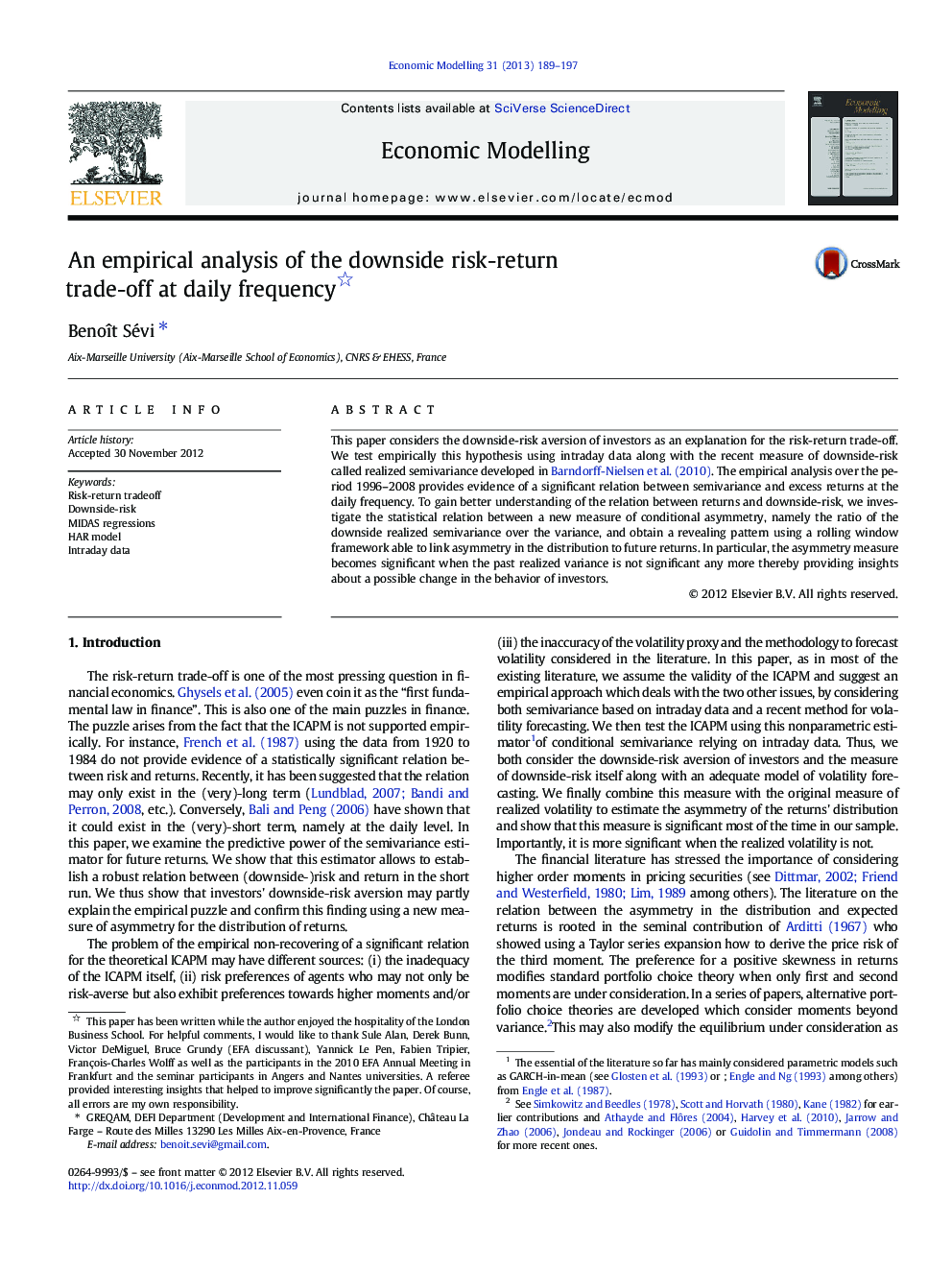| Article ID | Journal | Published Year | Pages | File Type |
|---|---|---|---|---|
| 5054806 | Economic Modelling | 2013 | 9 Pages |
This paper considers the downside-risk aversion of investors as an explanation for the risk-return trade-off. We test empirically this hypothesis using intraday data along with the recent measure of downside-risk called realized semivariance developed in Barndorff-Nielsen et al. (2010). The empirical analysis over the period 1996-2008 provides evidence of a significant relation between semivariance and excess returns at the daily frequency. To gain better understanding of the relation between returns and downside-risk, we investigate the statistical relation between a new measure of conditional asymmetry, namely the ratio of the downside realized semivariance over the variance, and obtain a revealing pattern using a rolling window framework able to link asymmetry in the distribution to future returns. In particular, the asymmetry measure becomes significant when the past realized variance is not significant any more thereby providing insights about a possible change in the behavior of investors.
⺠Empirical evidence of a relationship between downside-risk and return ⺠Estimation is based on transaction data over the 1996-2008 period. ⺠Asymmetry in the distribution helps to recover the risk-return relationship in the last part of the sample.
